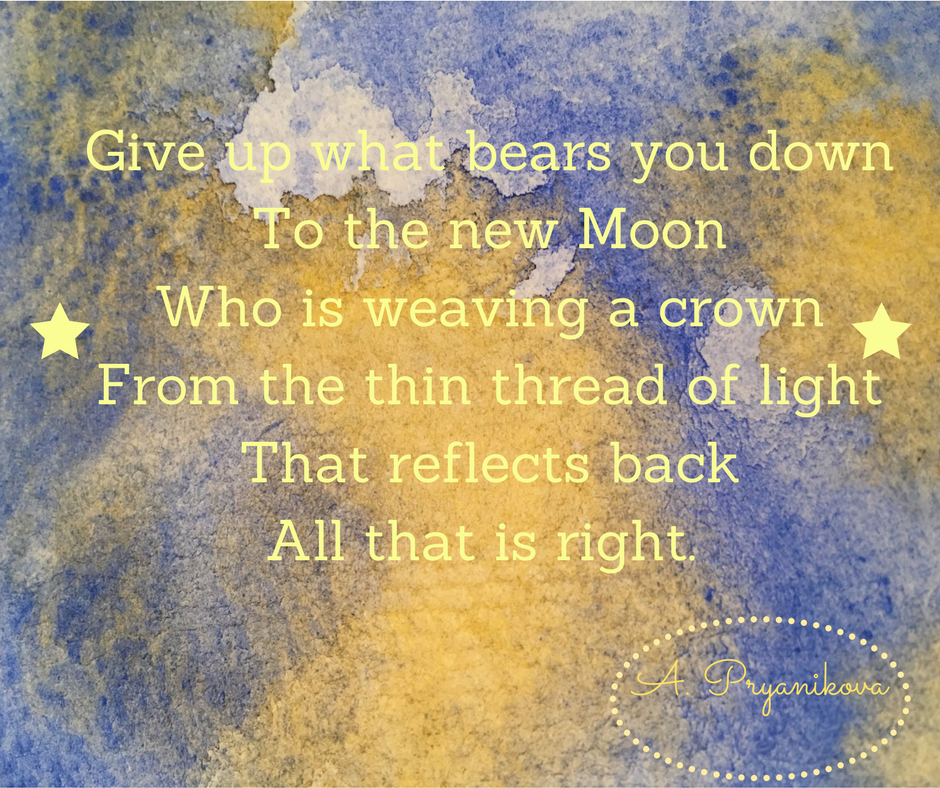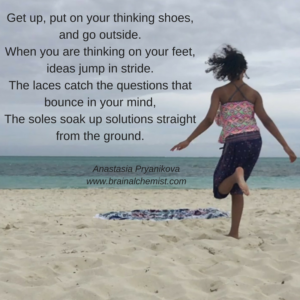Speaking under the New Moon: Communication rituals of release and promise
Do you believe that the Moon influences you on some level – emotionally, physically or spiritually? Well, if the Moon affects ocean tides, why not us? After all, we are made up mostly of water. Many poets and writers chose the Moon as their muse. Whether you pay attention to the phases of the Moon or not, it may be useful to imagine that your words are like those ocean tides, rising and falling, gaining power and focus with the rhythms of the Moon. As I am writing this post, the Moon is about 3 days old, it’s a 10.5% waxing crescent, growing its thin thread of light. What inspiration can it bring to our communication, whether it is public speaking, presenting, self-talk or journaling?
The New Moon is about planting the seeds for things to come and releasing everything that is in the way of the new energy. Here are a few metaphors and word rituals you can adapt to celebrate the new beginnings.
Journaling is a great practice to gather your thoughts and process your feelings. The New Moon invites you to look inward for answers. The answers are closer than you think. The following question prompts can help you harness the energy of transformation.
- What come up for you as topics to focus on or expand in your personal growth, family, relationships, career, well-being at this time?
- How do you want to feel in those areas of your life? What words best describe your feelings?
- What new routines and habits would support the themes you identified?
- What stands in the way of transformation?
- What do you need to know to make the desired changes happen?
- What do you need to let go of to make things happen?
- Who will support you on your journey?
- What excites you about this transformation?
Now, it’s time to weave the Moon thread. Here’s what it may look like, for example, if you chose “boundaries” as a topic for the area of relationships.
I want to be better at setting boundaries with people. I want to feel empowered and in control of my social life. I need to learn how to say “No” more often when invitations or projects don’t feel right. I worry that my refusals would upset people. I am a people-pleaser. I need to know that my relationships will be OK and even better when I learn to focus on things that matter, and that people can handle their own feelings, whether they are upset with me or now, and I can handle mine. I need to let go of my fears and insecurities. I need to love myself more. My family and my true friends will understand me and will be there for me. I am excited at the possibility of people respecting my time and my commitments. I am excited to have more time to do the things I love.
In your personal communication, you may feel the need to release something that has not been said or set forth the ideas that have been hiding in the background. Voice what’s there, waiting to be set free. Your best words will come from the mindful, sincere and honest place. The masks are off. Be prepared to be vulnerable. This is how your new relationships will sprout under the tender light of the New Moon.
In public speaking, the New Moon calls for an enticing opening – a story or an anecdote to capture the audience’s attention from the start and transport them into the new reality you are about to present to them. A powerful open-ended question can work as your “Big Bang” opening too, and so can unexpected statements or quotations. Giving a solid roadmap will ensure that your audience is ready for the journey and won’t get lost in the swirl of ideas. The New Moon also offers the Big Promise. What will your audience be able to do as a result of your speech? What do you promise your audience will get? How can you help the audience members release their pain? A good framework to tease your audience to a point that they are eager to hear your message is to say something like, “By the time you leave here today, you will be able to…” What will they be able to do as a result of your speech that they don’t do right now?
Finally, don’t forget to allow the moments of introspection in your speech. The Moon invites us to reflect on our experiences and feelings. People remember better things that are relevant to their lives. Reflection questions challenge the audience to think about how your main points relate to their lives and personal experiences. What can you ask your audience to make them think about their own situation as it relates to your message? In which context are they most likely to apply your message?
Whatever your communicative challenge is today, the New Moon invites you to focus on the energy that needs to be released before new opportunities can show up and unleash their transformative potential.




 environment. This is also true in the context of public speaking, especially for speakers who may experience social anxiety.
environment. This is also true in the context of public speaking, especially for speakers who may experience social anxiety.